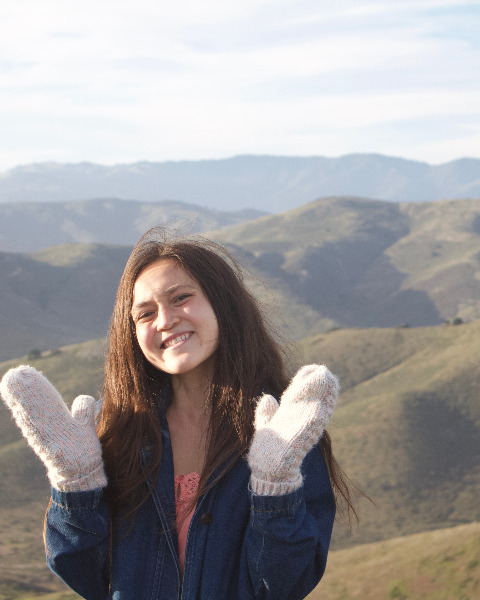Virtual Posters
Poster: Virtual Posters
Impact of Exercise on Adolescent Tibial Bone Geometry and Muscle Quality
Friday, March 22, 2024
12:00pm - 7:00pm US EDT
Location: Virtual
There are separate poster presentation times for odd and even posters.
Odd poster #s – first hour
Even poster #s – second hour
Co-authors:
Ethan Hill - Division of Physical Therapy Department of Orthopaedics and Rehabilitation - University of New Mexico School of Medicine; Lexi O'Donnell - College of Population Health - University of New Mexico Health Sciences Center; Lila Baca - University of New Mexico School of Medicine

Sage Templeton
Medical Student
University of New Mexico School of Medicine
Albuquerque, New Mexico, United States
Presenting Author(s)
Abstract Body : Background
Previous research has hypothesized that attainment of peak bone mass during childhood prevents the development of structural bone diseases later in life. Tibial cross-sectional geometry (CSG), which quantifies bone biomechanical properties, has been shown to adapt to various types of exercise, as bones adapt to mechanical forces associated with gravity, acceleration, impact, and muscle force. This study aims to analyze the effect of biomechanical challenge on bone and muscle quality in an adolescent population.
Methods
Data are generated for adolescents aged 16-20 (n = 44) from a post-mortem CT sample from the New Mexico Office of the Medical Investigator. Activity is reported from family interviews. Tibial CSG data for cross sectional area (CSA) and torsional rigidity (J) were obtained using 3D Slicer from midshaft (50%) and proximal sites (80%). Thigh muscle area (TMA), thigh muscle density (TMD), psoas muscle area (PMA), and psoas muscle density (PMD) were also obtained. All measurements were body size standardized. Subjects were grouped into an exercise category based on reported activities, and student t-tests were performed comparing bone and muscle. Linear regression with multiple variables compared midshaft and proximal bone parameters to muscle density and area measurements, and a model for each muscle parameter was determined with a stepwise model progression.
Results
No significant differences were found between groups in tibia CSA, tibia J, PMD, or TMA. The exercise group had higher PMA (p = 0.003) and TMD (p = < 0.001). PMA was modelled best with proximal CSA (p-value = 0.022), PMD was best modelled with midshaft J (p-value = 0.122), TMA was best modelled with midshaft CSA (p-value = 0.054), and TMD was modelled best with midshaft J (p-value= 0.020).
Conclusion
Adolescents who engaged in reported exercise had higher PMA and TMD compared to inactive subjects. Tibial CSA correlated best with muscle area and tibial J correlated best with muscle density. Since muscle forces contribute to bone mechanical strain, increased contractile forces may be the beginning of bone developmental changes. This may be demonstrated by the positive correlation of tibial CSA to PMA and tibial J to TMD. However, bone alterations are much slower than those of muscle and we may not have been at the appropriate time point to assess significant bone changes in our population.
Previous research has hypothesized that attainment of peak bone mass during childhood prevents the development of structural bone diseases later in life. Tibial cross-sectional geometry (CSG), which quantifies bone biomechanical properties, has been shown to adapt to various types of exercise, as bones adapt to mechanical forces associated with gravity, acceleration, impact, and muscle force. This study aims to analyze the effect of biomechanical challenge on bone and muscle quality in an adolescent population.
Methods
Data are generated for adolescents aged 16-20 (n = 44) from a post-mortem CT sample from the New Mexico Office of the Medical Investigator. Activity is reported from family interviews. Tibial CSG data for cross sectional area (CSA) and torsional rigidity (J) were obtained using 3D Slicer from midshaft (50%) and proximal sites (80%). Thigh muscle area (TMA), thigh muscle density (TMD), psoas muscle area (PMA), and psoas muscle density (PMD) were also obtained. All measurements were body size standardized. Subjects were grouped into an exercise category based on reported activities, and student t-tests were performed comparing bone and muscle. Linear regression with multiple variables compared midshaft and proximal bone parameters to muscle density and area measurements, and a model for each muscle parameter was determined with a stepwise model progression.
Results
No significant differences were found between groups in tibia CSA, tibia J, PMD, or TMA. The exercise group had higher PMA (p = 0.003) and TMD (p = < 0.001). PMA was modelled best with proximal CSA (p-value = 0.022), PMD was best modelled with midshaft J (p-value = 0.122), TMA was best modelled with midshaft CSA (p-value = 0.054), and TMD was modelled best with midshaft J (p-value= 0.020).
Conclusion
Adolescents who engaged in reported exercise had higher PMA and TMD compared to inactive subjects. Tibial CSA correlated best with muscle area and tibial J correlated best with muscle density. Since muscle forces contribute to bone mechanical strain, increased contractile forces may be the beginning of bone developmental changes. This may be demonstrated by the positive correlation of tibial CSA to PMA and tibial J to TMD. However, bone alterations are much slower than those of muscle and we may not have been at the appropriate time point to assess significant bone changes in our population.

